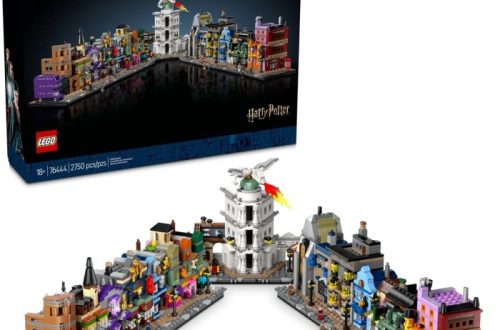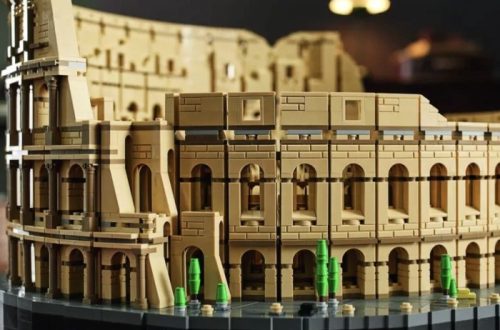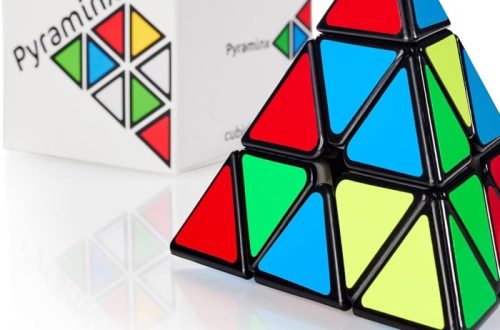Who is Nightmare Batman?
Nightmare Batman channels a darker, more dystopian version of the iconic Batman character. Unlike the traditional Gotham hero, Nightmare Batman emerges from an apocalyptic future. He’s a vision sprung from Bruce Wayne’s fears and anxieties, a mirage from an alternate reality where hope dwindles. In essence, Nightmare Batman is a rogue figure, donning a rugged, militarized Batsuit. His persona is steely, his methods unorthodox, and his world harsh. Draped in a trench coat, the character brings a mix of desperation and vigilantism to the fore. Fans know him from his brief yet impactful appearances, notably in the ‘Knightmare’ sequences. These scenes come from the DC Extended Universe films, where he stands as a cautionary tale. Nightmare Batman fights not just crime, but also the potential for overwhelming darkness that could consume the entire world. His creation sparks curiosity and intrigue, pushing the boundaries of Batman’s ethos.
The Origins of Nightmare Batman
The concept of Nightmare Batman first appeared in the ‘Knightmare’ sequence of the film ‘Batman v Superman: Dawn of Justice’. This dark figure is not a product of a direct comic book adaptation. Rather, he is a cinematic creation. Director Zack Snyder envisioned this dystopian Batman for the big screen. His goal was to explore the psyche of Bruce Wayne. Snyder wanted to show what might happen if Bruce’s fears ran wild.
Nightmare Batman’s world stems from a possible future. In this timeline, Superman falls under Darkseid’s control. Earth lies in ruin. Humanity is close to its end. The regular Batman we know fears this dark potential. Hence, the ‘Knightmare’ sequence is a dream. It is a warning to Bruce Wayne.
This narrative choice adds depth to Batman’s character. It serves as a storytelling device. It taps into the ‘what if’ scenarios that fans love to ponder. The apocalyptic future is not set in stone. It is a vision that might spur Bruce Wayne to action. Nightmare Batman is a traumatic projection. It is a stark contrast to the hopeful hero we are familiar with.
This alternate reality touches on the themes of fear and power. It examines how even the most steadfast heroes can falter. Nightmare Batman is a reminder. It tells us that the line between heroism and darkness is very thin. Snyder’s creation has since sparked imagination and debates among fans. It stands as a unique and haunting version of the famed Caped Crusader.
Nightmare Batman’s Role in the DC Universe
Nightmare Batman serves a niche, yet pivotal role in the DC Universe. This character does not exist within the regular continuity of comic book storylines. Instead, he adds a layer of complexity to the multiverse concept. Nightmare Batman appears as a symbol of what could go wrong. He acts as a warning to other characters in the story — and to the audience. In the realm of DC, he represents the ultimate ‘what if’. His role thus becomes to affect the mainstream heroes, like the canonical Batman. Nightmare Batman’s very existence urges them to consider their actions and their potential consequences.
In the films, Nightmare Batman gives viewers a reason to fear and hope. His stark landscape strikes a chord with the concept of heroism put to the test. It’s a setting where good has not triumphed over evil. Here, the usual rules do not apply, and the outcomes are uncertain. While he may be a vision from a dream sequence, his impact on the DC narrative is real. Nightmare Batman draws us into a discussion about destiny, choice, and what it means to be a hero.
Key Appearances: Comics and Screen Adaptations
Nightmare Batman’s existence is not rooted in the pages of comic books. His character blooms on the silver screen. The ‘Knightmare’ vision premiered in the film ‘Batman v Superman: Dawn of Justice’. His presence is brief but intense in this tale of heroism and conflict.
This grim figure next appears in ‘Justice League’. Director Zack Snyder revisits the character in the ‘Snyder Cut’. His appearance in ‘Justice League’ amplifies the sense of dread. It delves into a post-apocalyptic world on the brink of despair.
Fans also spotted Nightmare Batman in ‘Suicide Squad’. He cameoed in pursuit of Harley Quinn and Deadshot. This solidified his place in the DC Extended Universe.
While he has yet to star in his own standalone comic or film, he influences the story arcs. Each appearance adds layers to his role in the DC storytelling tapestry.
Nightmare Batman reveals a new dimension of Bruce Wayne. He showcases a Batman pushed to his limits. His place in cinematic adaptations is significant. It explores the possibilities of a hero’s fall to darkness.
Despite his limited screen time, he leaves a lasting impact. He encourages viewers to reflect on the more profound themes within the DC Universe. Accountability, choice, and the hero’s journey take a forefront position.
The character offers a stark contrast to the traditional Batman. Nightmare Batman is a visual and emotional exploration of fear. His appearances are a thread connecting potential storylines. They serve as a vehicle for asking ‘what if’ and challenge the audience’s perceptions.
Nightmare Batman may be a cinematic creation. Yet, he has etched his place among the greats of the DC Universe through his thought-provoking appearances.
The Symbolism Behind Nightmare Batman’s Imagery
Nightmare Batman isn’t just a character; he’s a symbol. His imagery represents Bruce Wayne’s deepest fears. The military-style Batsuit speaks to a world at war. The rugged appearance shows a broken hero. Each aspect of his design symbolizes an aspect of his universe.
The trench coat he wears isn’t just for style. It suggests survival in a harsh climate. It’s a clothing choice for a warrior, not just a vigilante. The darker tones of the suit reflect the somber reality he faces. His world lacks the bright hope of the traditional Batman’s Gotham.
His gadgets are not shiny or new. They carry a sense of wear, of heavy use. This indicates a long, hard fight against evil. His world is one where justice struggles to survive.
The ‘Knightmare’ sequences are rich with symbolism. Visions of a desolate world, a sky darkening with evil. These images are powerful. They ask viewers to think about how close we all are to such a world.
Nightmare Batman’s mask is not polished but battle-scarred. It hides not just his identity but his grief and anger. His eyes, often seen glowing, suggest his insight into the darkness. It’s a visual hint at the vigilance needed in a world gone mad.
In sum, Nightmare Batman’s imagery is a mix of fear, war, and the fight for survival. Each element has been crafted to evoke emotion and thought. He’s a reminder of what could happen if our darkest fears take over.
Fanbase and Cultural Impact
The character of Nightmare Batman has captivated a dedicated fanbase and made a distinctive mark on pop culture. Thriving within a subset of the broader Batman fandom, enthusiasts of Nightmare Batman cherish the gritty realism and the apocalyptic vision he represents. His following extends beyond comic book readers to include those who embrace the darker, more mature themes in storytelling.
He has inspired a range of fan art, from detailed illustrations to full-on cosplay. His unique look, marked by the trench coat and rugged Batsuit, offers a fresh take for artists and cosplayers alike. In these creations, fans echo the character’s themes of fear and resilience, bringing Nightmare Batman’s world to life.
On social media platforms, discussions about Nightmare Batman often spread, sparking debates and theories. Fans speculate on his potential storylines and the implications for the DC Universe. They analyze his role in the films and anticipate his next appearance with enthusiasm.
Moreover, Nightmare Batman’s cultural impact can be seen in the way he has influenced dialogues around the concept of a hero. His presence has prompted audiences to question what it means to fight for justice in a seemingly hopeless situation. This exploration into the psyche of heroism has led to broader discussions in film and comic forums.
To sum up, Nightmare Batman not only resonates with a hardcore group of fans but also leaves an impression on the cultural landscape. His image challenges our ideas of heroism. His storylines invite us to confront our fears. Nightmare Batman drives a conversation about the ever-blurring line between good and evil, even within a hero.
Exploring the Gear and Gadgets of Nightmare Batman
Nightmare Batman’s arsenal is as distinct as his persona. His gear is practical, built for survival. Unlike the sleek gadgets of traditional Batman, Nightmare Batman’s equipment is rugged, utilitarian, tailored for a harsh landscape. His gadgets tell a story of constant strife and the need for resilience.
Let’s break down some of his notable equipment:
- Customized Batsuit: Reinforced for combat, it shows signs of extensive battle wear. This suit is more armor than costume, indicating years of warfare.
- Utility Belt: It’s heavy-duty, stocked with essential survival gear. The belt carries tools for every imaginable scenario in a devastated world.
- Firearms: A surprising addition to Batman’s usual non-lethal arsenal. Nightmare Batman wields guns, a stark contrast to his no-kill policy in unaltered timelines.
- Goggles: They protect against debris and enhance vision in a dusty, ravaged environment. They also imply a Batman who needs to be ever-vigilant.
- Grappling Hook: Redesigned for navigating through ruins rather than sleek cityscapes. It’s a symbol of his continuous fight to move forward.
Each gadget is a testament to Nightmare Batman’s adaptation to his environment. They highlight his preparedness for the extreme challenges he faces. These tools are less about the finesse of crime-fighting and more about brute survival.
This inventory showcases a Batman forced to abandon his usual stealthy approach. He is in a survival mode, where the elegance of his traditional gadgets gives way to the grit of necessity. The gear and gadgets of Nightmare Batman underscore the overarching theme: the fight to overcome overwhelming adversity.
Comparing Nightmare Batman with Traditional Batman
Nightmare Batman and traditional Batman are like two sides of a coin. Traditional Batman operates in Gotham, fighting crime with a moral code. He avoids killing and uses non-lethal gadgets. His Batsuit, sleek and intimidating, is a symbol of justice.
In contrast, Nightmare Batman is a grim warrior. He comes from a vision of the future, a world in chaos. His suit is battle-worn, heavy with the scars of war. Unlike his counterpart, he wields firearms, a shift from Batman’s usual stance.
Traditional Batman relies on stealth and detective skills. He’s a master tactician, often outsmarting his foes. Gotham’s dark knight works within the law’s bounds, in a city where hope still glimmers.
Nightmare Batman’s approach is raw survival. In his world, the usual rules have failed. He fights in a desolate landscape, a place beyond the reach of law. The future he embodies is one without hope, where the end justifies the means.
The two characters reflect different themes. Traditional Batman champions the fight against crime while preserving life. Nightmare Batman symbolizes the consequences of losing that battle. His presence is a warning: what might come if we fail.
They both wear the mask of the bat. Yet, they stand for distinct realities. One inspires by holding onto principles. The other by pushing the boundaries of heroism in the face of dire circumstances.
In summary, Nightmare Batman challenges our understanding of the Dark Knight. He contrasts with the traditional Batman, showing just how differently Bruce Wayne could navigate a world gone mad.





